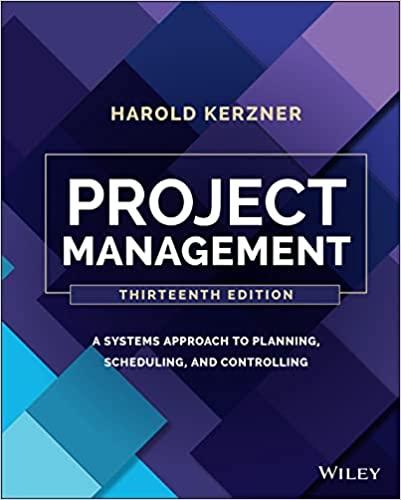Question
WS.12 Teaching Performance Evaluation Every education institution has adopted a performance evaluation technique to assess teaching effectiveness. Below, you may find the summary of the
WS.12 Teaching Performance Evaluation
Every education institution has adopted a performance evaluation technique to assess teaching effectiveness. Below, you may find the summary of the teaching evaluation at TU.
Teaching will be evaluated according to the following four components;
- Instructional Delivery Skills - this component involves the creation of an overall classroom environment conducive to learning, clarity of communication, enthusiasm, and display of a respectful and caring attitude toward students. Instructional delivery skills may be assessed using student course evaluation data and classroom visitation.
- Instructional Design - this component involves the application of theory to practice, course objectives, the level of rigor and challenge of courses, the selection, scope, sequence, and organization of topics, the methods of teaching, and the methods of evaluating student performance. Instructional Design may be assessed using a narrative prepared by the faculty member, syllabi, assignments and exams, and student course evaluations.
- Content expertise - this component involves the level of subject matter knowledge displayed by the faculty member and the currency of such knowledge. Content expertise may be assessed using a narrative prepared by the faculty member, classroom visitation, faculty writings, and presentations, publications related to the scholarship of teaching, and participation in continuing education / professional development.
- Course Management - this component involves punctuality in meeting class and office hour responsibilities, attendance, prompt grade reporting and accessibility to students enrolled in the faculty member's classes. Course management may be assessed using student course evaluations.
A variety of means to assess teaching effectiveness are available. Three most commonly used methods are peer observation, student evaluations, and a teaching narrative. These three evaluation methods are intended to provide a holistic view of a faculty member's teaching performance.
- Peer Observation. Non-tenured faculty members shall be visited twice each academic year by a member of the department's promotion/tenure/reappointment/merit ("PTRM") committee. After observing the class for a reasonable time, the visitor prepares a peer evaluation form, which must be submitted to the faculty member within one week for inclusion in the faculty member's annual report.
- Student Course Evaluations. Full and part-time faculty members shall be evaluated by students in all courses, including minimester and summer courses. Faculty will use the approved teaching evaluation form(s) and processes approved by the department and/or the university.
- Teaching Narrative. A teaching narrative is a comprehensive statement prepared by faculty members describing relevant instructional practices employed in their teaching. Examples of items that could be included in a narrative are (but not limited to) continuous improvement initiatives, assignments and grading standards, learning outcomes, and technology applications.
The following items from the student course evaluation are used to assess the teaching effectiveness.

Step by Step Solution
There are 3 Steps involved in it
Step: 1

Get Instant Access to Expert-Tailored Solutions
See step-by-step solutions with expert insights and AI powered tools for academic success
Step: 2

Step: 3

Ace Your Homework with AI
Get the answers you need in no time with our AI-driven, step-by-step assistance
Get Started


